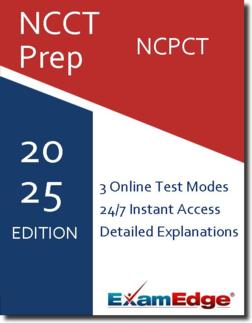NCCT NCPCT (NCPCT) Practice Tests & Test Prep by Exam Edge - Test Reviews
Based on 34 Reviews
- Real Exam Simulation: Timed questions and matching content build comfort for your NCCT NCPCT test day.
- Instant, 24/7 Access: Web-based NCCT National Patient Care Technician practice exams with no software needed.
- Clear Explanations: Step-by-step answers and explanations for your NCCT exam to strengthen understanding.
- Boosted Confidence: Reduces anxiety and improves test-taking skills to ace your NCCT National Patient Care Technician (NCPCT).

NCCT NCPCT (NCPCT) Practice Tests & Test Prep by Exam Edge - Review
NCCT National Patient Care Technician - Reviews
Excellent
Based on
170
reviews
“ I just wanted to say thank you! Your study guides have been more than a blessing for me. I passed the ncct medical assistant's exam with no problems, other than self stress. Thanks again. Will recommend to anyone taking future exams.
CHARLES, KINGSTON, NY
See why our users from 154 countries love us for their exam prep! Including 34 reviews for the NCCT NCPCT exam.
Exam Edge is an Industry Leader in Online Test Prep. We work with our Institutional Partners to offer a wide array of practice tests that will help you prepare for your big exam. No Matter how niche field of interest might be, were here to help you prepare for your test day.
| 2.8M | 4.5M | |
| Users | Tests Taken | |
| 100K | 19 | |
| Unique Exams | Years in Business | |


